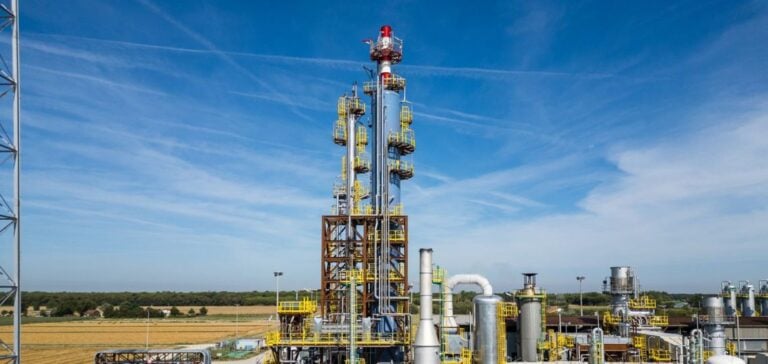In Italy, Eni and Snam are initiating a carbon capture and storage (CCS) project in the Adriatic Sea, near Ravenna.
The project focuses on reducing CO2 emissions from industrial facilities.
CCS involves capturing carbon dioxide from industrial processes and injecting it into underground reservoirs, thus avoiding its release into the atmosphere.
This first phase specifically concernsEni‘s Casalborsetti natural gas processing plant, whose CO2 emissions will be transported and stored in the depleted Porto Corsini Mare Ovest field, 3,000 meters beneath the sea.
90% reduction in emissions at Casalborsetti
The project will reduce emissions from the Casalborsetti plant by over 90%, or around 25,000 tonnes of CO2 per year.
The process involves converting existing gas pipelines to transport carbon dioxide to an offshore platform, where it will be permanently stored.
Using infrastructure already in place optimizes costs and speeds up project implementation, while meeting safety and regulatory compliance requirements.
Extending storage capacity to industrial scale
Eni and Snam plan to extend the capture and storage capacity to 4 million tonnes of CO2 per year by 2030.
This extension, which constitutes phase 2 of the project, involves the development of a broader infrastructure to integrate other CO2 emitters.
The aim is to make the Ravenna region a strategic center for emissions management in Italy’s energy-intensive industrial sectors.
The implementation of this large-scale system would help to meet the growing expectations for CO2 emissions reduction throughout the European Union.
Strategy and outlook for the energy industry
The Adriatic Sea initiative is part of a broader strategy to adapt to new European regulations on greenhouse gas emissions.
Industry players anticipate increased demand for solutions such as CCS, as a complement to other energy transition strategies.
The Ravenna project stands out for its integrated approach, combining capture, transport and storage, while building on existing infrastructure networks.
This approach offers a pragmatic response to environmental challenges without compromising industrial competitiveness.
Expected impact and potential collaborations
The CSC in Ravenna could serve as a model for other similar projects in Europe.
Several countries, including the UK and Norway, have already launched comparable initiatives, and the Italian project could facilitate cross-border cooperation.
The harmonization of safety standards and technologies between these projects could lead to increased standardization, which would benefit the entire European energy sector.
The successful integration of this project could influence the future development of energy policies, positioning Italy among the leaders in the management of industrial CO2 emissions.
The ability to adapt quickly to regulatory requirements and optimize the use of existing infrastructures represents a strategic asset for market players.






















